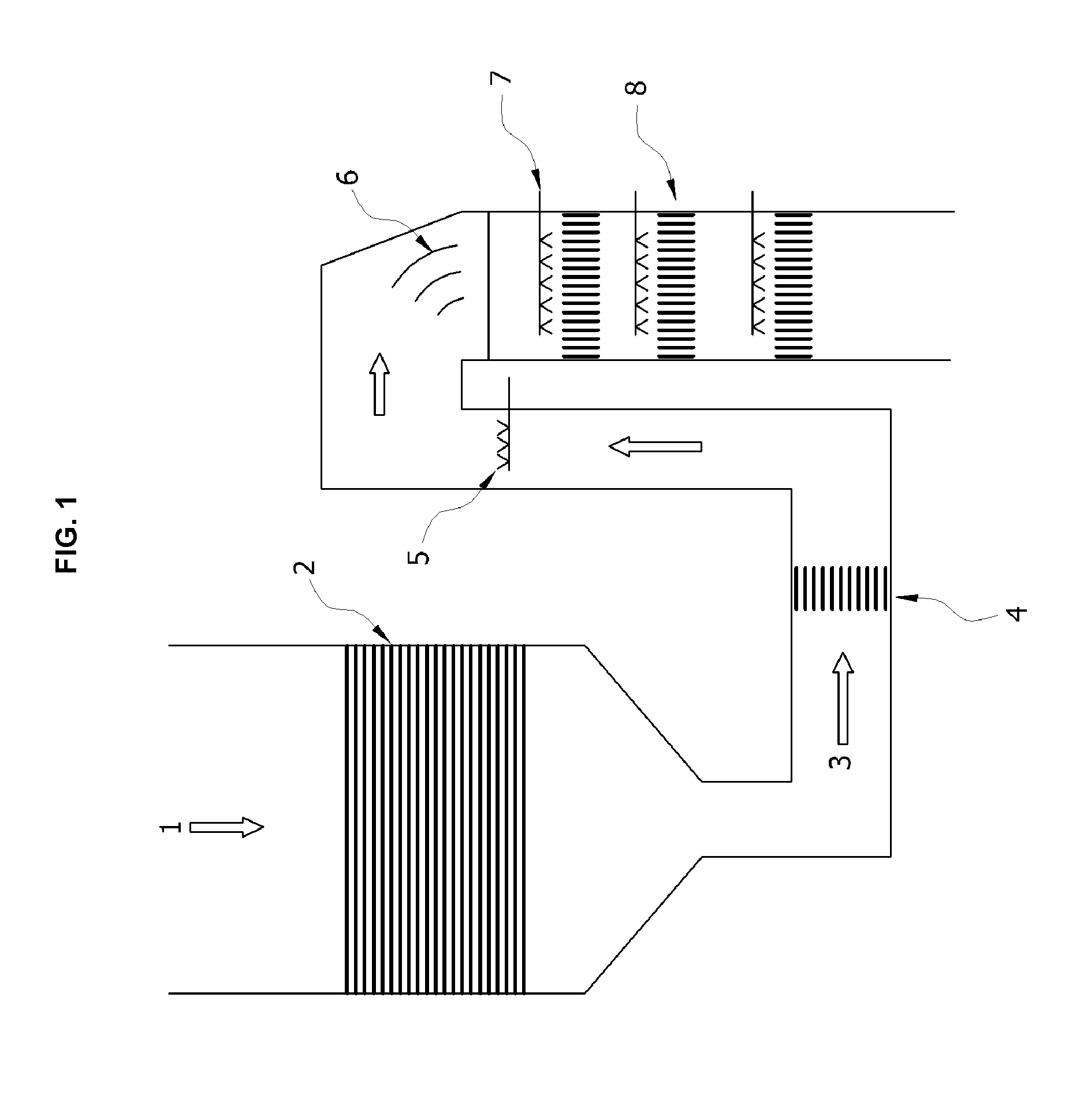SYSTEM USING SELECTIVE CATALYTIC REDUCTION FOR IMPROVING LOW-TEMPERATURE De-NOx EFFICIENCY AND REDUCING YELLOW PLUME
a catalytic reduction and low-temperature technology, applied in the direction of lighting and heating apparatus, separation processes, emission prevention, etc., can solve the problems of increasing the amount of catalyst, increasing the efficiency of the de-no/sub>catalytic at low temperature, and requiring a lot of cost, so as to reduce the volume of the catalytic reactor, the effect of increasing the catalyst and reducing the cost of auxiliary fuel
- Summary
- Abstract
- Description
- Claims
- Application Information
AI Technical Summary
Benefits of technology
Problems solved by technology
Method used
Image
Examples
example
[0055]Fast selective catalytic reduction (SCR) was carried out under the following condition.
[0056]De-NOx efficiency was measured under the condition of NH3 / NOx=1.0, O2=3%, H2O=6%, SV=60,000 hr−1 and temperature=180-300° C., with NOx concentration fixed at 300 ppm and NO2 / NOx ratios of 0.1, 0.2, 0.3 and 0.4.
TABLE 1NO2 / NOxNO (ppm)NO2 (ppm)NOx (ppm)0.1270303000.2236643000.3212883000.4174126300
[0057]As seen from FIG. 10, the de-NOx efficiency increased with the NO2 / NOx ratio. FIG. 11 shows a relationship between the NO2 / NOx ratio and temperature when de-NOx efficiency is 80%. The reaction temperature could be lowered by as much as 80° C., from 273° C. when NO2 / NOx=0.1 to 194° C. when NO2 / NOx=0.4.
PUM
| Property | Measurement | Unit |
|---|---|---|
| Temperature | aaaaa | aaaaa |
| Temperature | aaaaa | aaaaa |
| Efficiency | aaaaa | aaaaa |
Abstract
Description
Claims
Application Information
 Login to View More
Login to View More - Generate Ideas
- Intellectual Property
- Life Sciences
- Materials
- Tech Scout
- Unparalleled Data Quality
- Higher Quality Content
- 60% Fewer Hallucinations
Browse by: Latest US Patents, China's latest patents, Technical Efficacy Thesaurus, Application Domain, Technology Topic, Popular Technical Reports.
© 2025 PatSnap. All rights reserved.Legal|Privacy policy|Modern Slavery Act Transparency Statement|Sitemap|About US| Contact US: help@patsnap.com



